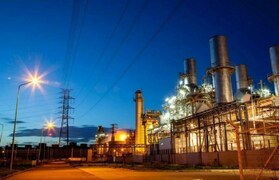Britain could get access to Denmark's big reserves of wind power after grid operators in both countries agreed on Thursday to co-operate on building a power link that could supply up to 1,400 MW of electricity. An interconnector would be part of wider plan by Britain's National Grid to diversify energy supplies by hooking up its electricity network with low carbon sources of power from Belgium, Iceland and Norway.
France, Ireland and the Netherlands already supply Britain with electricity through subsea cables. "The interconnector could unlock significant economic benefits for both countries in helping to maximise the potential of both offshore and onshore wind, add to security of supply and enable a competitive market," National Grid and Denmark's state-owned Energinet.dk said in a joint statement.
The two companies said they would look at possible routes and landing sites, budgets and permitting before making a decision on whether to proceed with the project. A National Grid spokeswoman declined to provide an estimate of the cost or capacity of a trans-North Sea power link to Denmark, but added that no more than 1,400 MW of electricity could be transmitted in either direction.
Denmark, a major producer of wind power, already exports electricity to Norway, Sweden and Germany, and may build a link with the Netherlands. Interconnectors are increasingly important in integrating Europe's electricity markets as they allow excess production in one country, for example from wind farms, to flow easily to a neighbouring country that needs it. But some of Britain's neighbours say proposed power links might not be economically viable because of energy market reforms. The UK government wants to include a so-called capacity mechanism that pays standby power facilities for producing extra electricity when required.
BR100
15,186
Increased By
82.6 (0.55%)
BR30
42,842
Increased By
223 (0.52%)
KSE100
149,361
Increased By
1164.3 (0.79%)
KSE30
45,552
Increased By
281.7 (0.62%)





















Comments
Comments are closed.